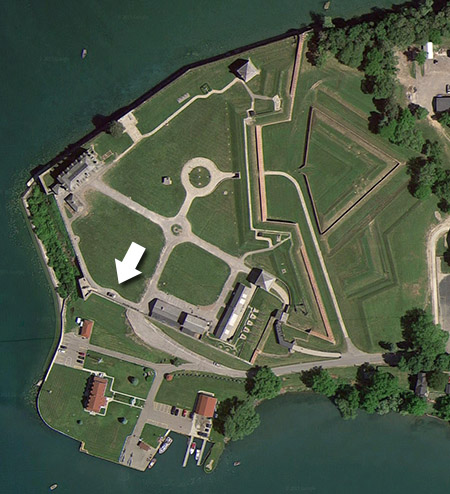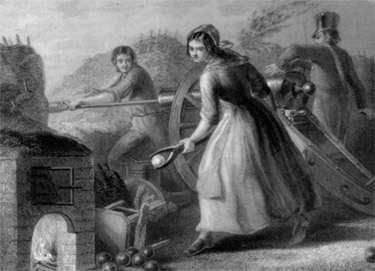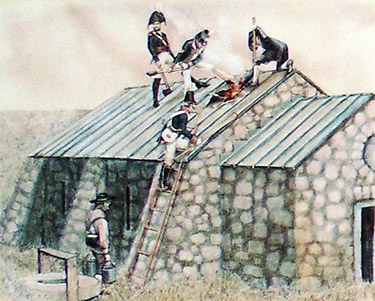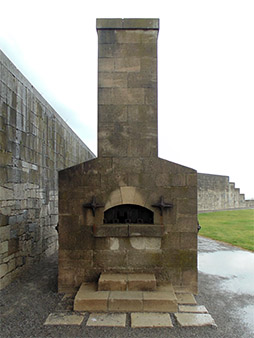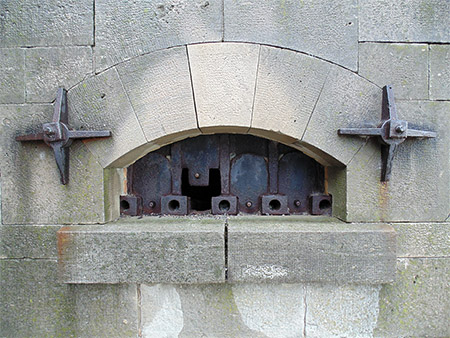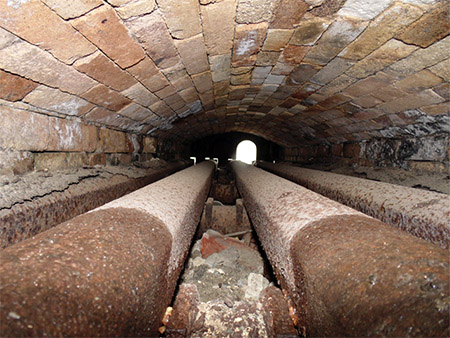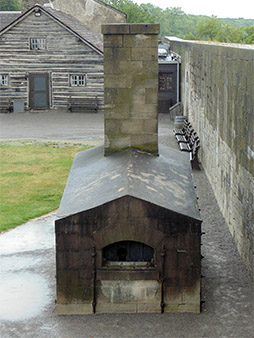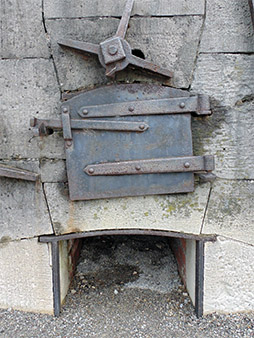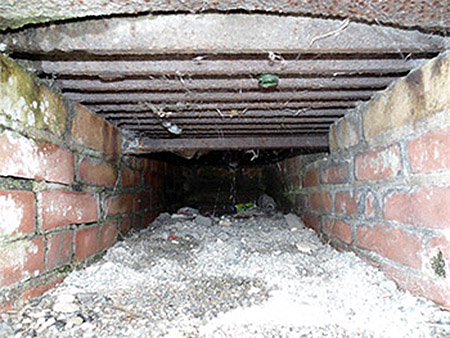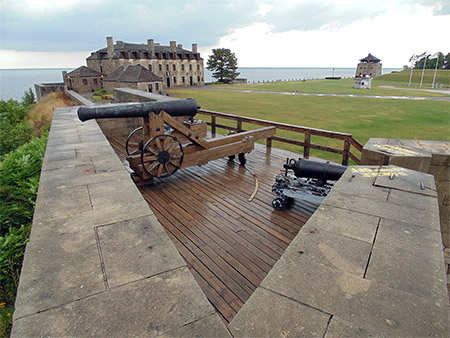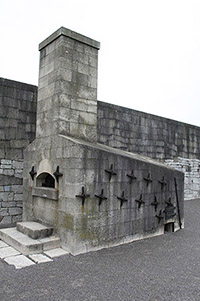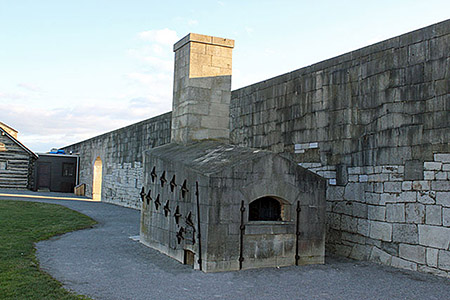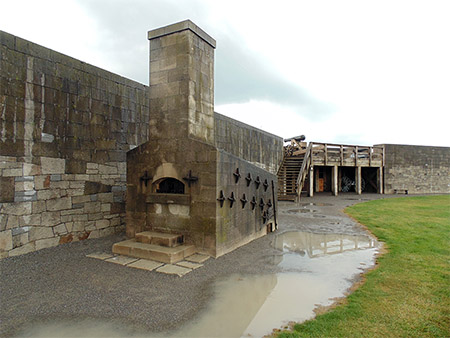The Seneca were likely even
less pleased when the end of the American Revolutionary War (1775-1783) made them all semi-citizens of the United States. Despite losing the war, Great Britain held on to Fort Niagara for another decade, when the Jay Treaty tied up many of the Revolution's loose ends in 1794. The new United States had a new starfort!
Fort Niagara soon faced British starry edifice
Fort George, just 1200 yards across the Niagara River. Fort George had been completed in 1802 for the express purpose of countering Fort Niagara, but when the War of 1812 (1812-1815) began in June of 1812, neither fort was ready to do much of
anything of an offensive nature.
The two forts finally got their acts together and exchanged artillery fire in October and November of 1812. Fort George enjoyed a slight elevation advantage, so Fort Niagara's garrison hauled a six-pound cannon up onto the
Maison's roof, which, in at least
one case, accomplished the desired goal of devastating, plunging fire.
On October 13, 1812, an American hot shot hit the roof of Fort George's powder magazine. While this certainly
could have been the death blow that scattered all of Fort George's inhabitants to pieces had the fire that started gone unchecked, checked it was, and the British were not incinerated. This non-event was, however, one of the
only instances of hot shot doing what it was intended to do, which was being a potentially game-changing destructive force, after the events at
Yorktown in 1781.
Serving the gun atop the
Maison during a furious artillery exchange of November 21, 1812, was
Betsy Doyle. Living at Fort Niagara with her children, Betsy was the wife of Andrew Doyle (a US Artillery officer who had been captured by the British at the Battle of Queenston Heights in the previous month), and felt compelled to assist her husband's unit in his absence. Mrs. Doyle heroically carried heated shot "from a fire" (there was no Hot Shot Furnace at Fort Niagara at this point, famous engraving of Mrs. Doyle's heroics to the contrary) to the gun atop the
Maison, in the interest of enflaming Fort George's wooden buildings.














